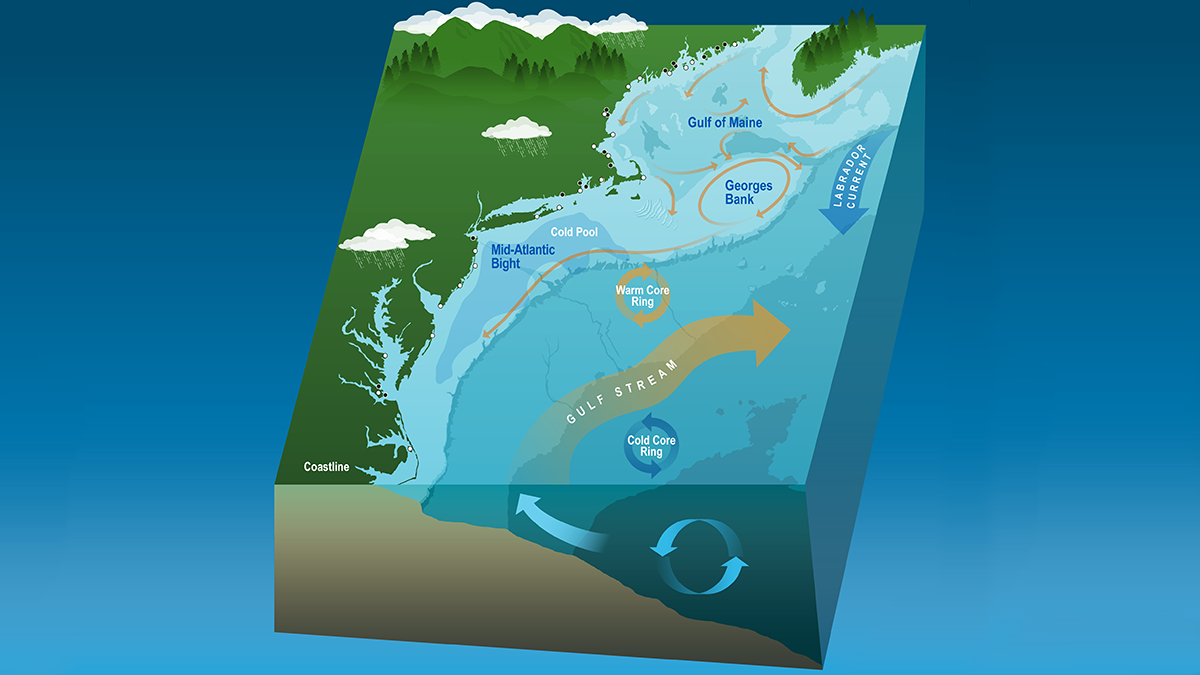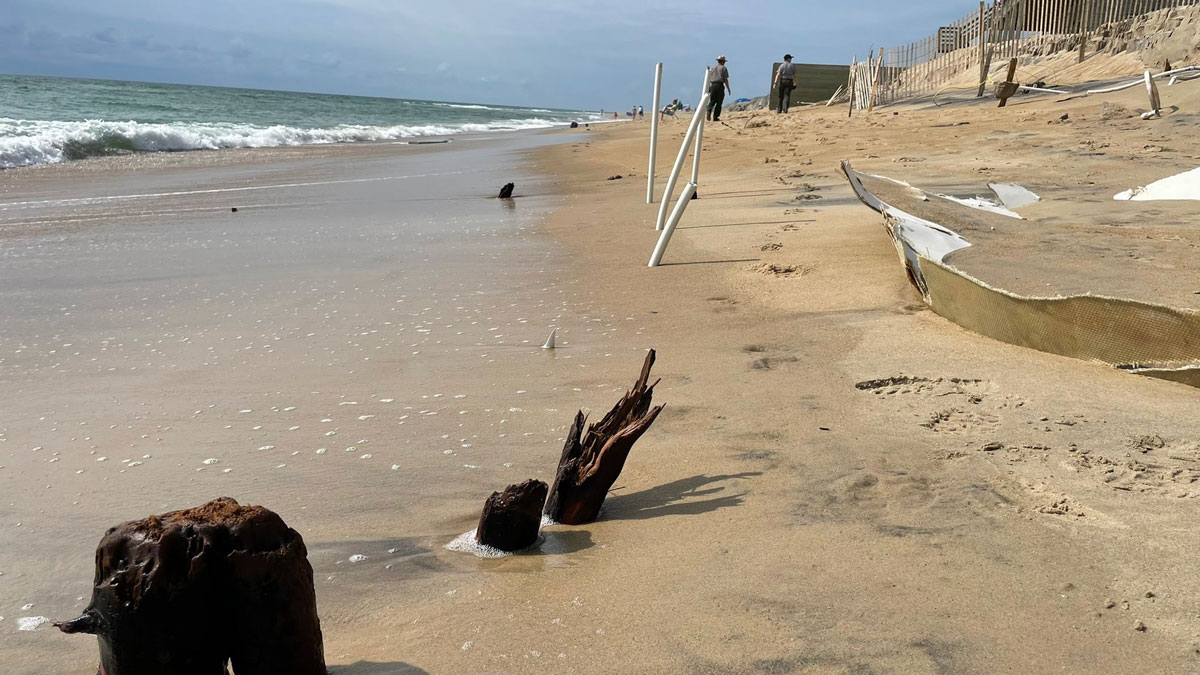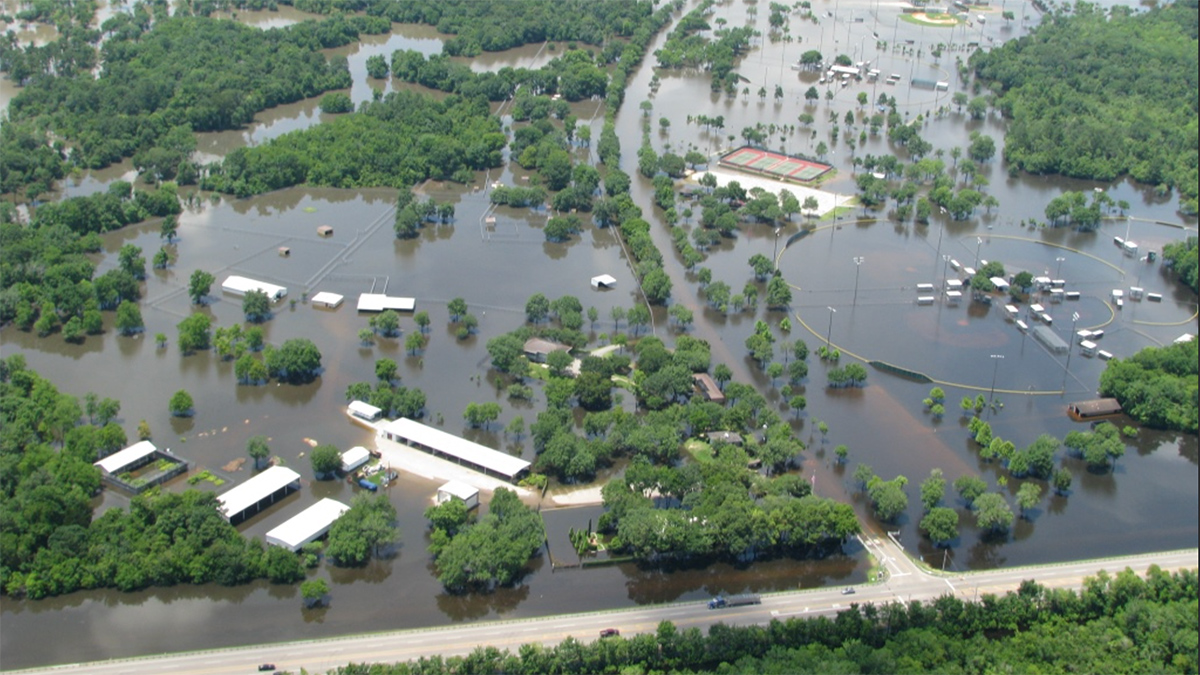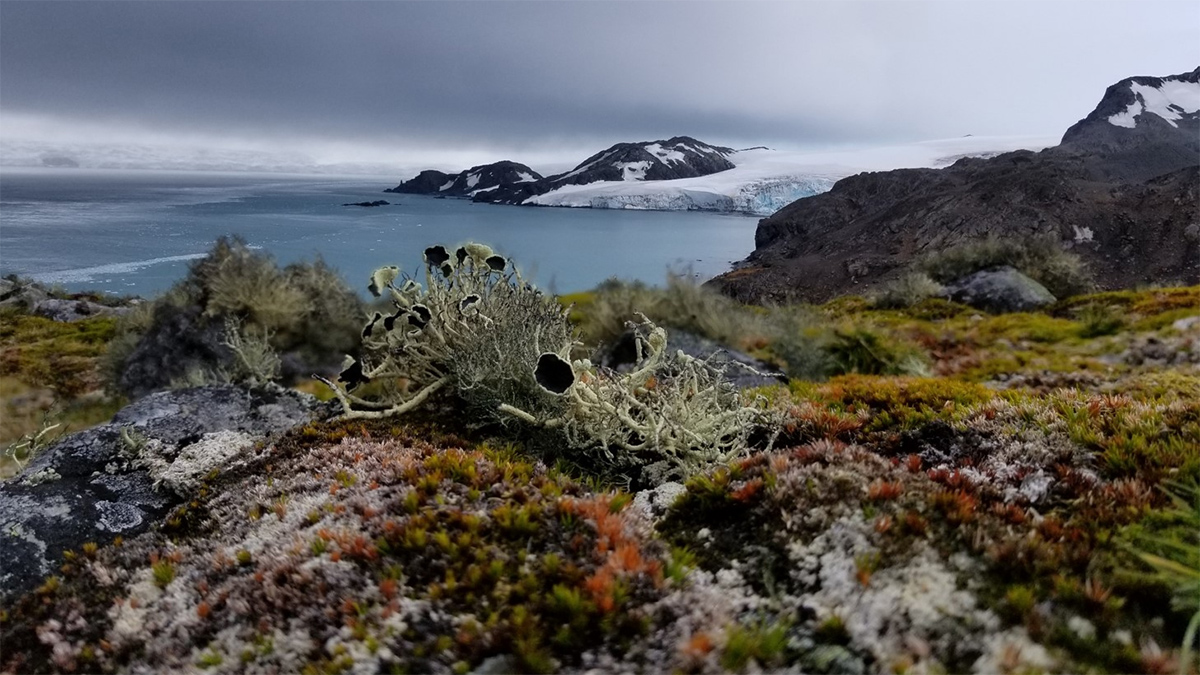One decade of high-quality satellite salinity observations provide valuable insights into the complex dynamics in the Mid-Atlantic Bight.
beaches, coasts, & shorelines
A Seychelles Shoreline Resists the Rising Seas
The geomorphology of a protected atoll likely contributed to its ability to maintain its shoreline over a turbulent half-century.
Climate Change Is Driving Dangerous Bacteria Farther North
Satellite data could help address rising rates of vibriosis infections, often the result of eating undercooked seafood, along the East Coast of the United States.
Coastlines Around the World Are Losing Sediment
A new tool maps coastal sediments on the basis of water color. It shows that 75% of the world’s coastlines may be losing suspended sediment.
Buried Tree Stumps Show Shoreline Shifts of the Outer Banks
Storms are unburying centuries-old stumps on North Carolina’s barrier islands. Researchers hope these long-gone forests can help land managers plan for the future.
Subtle Coastal Sinking Raises Storm Surge Risks
New detection of millimeter-scale subsidence along vulnerable coastlines means flood risk predictions may be inaccurate.
New Map Reveals the Extent of Vegetation in Antarctica
More than 40 square kilometers of vegetation cover Antarctica, including in previously unknown areas. A new map offers fresh insights for conservation amid climate change.
Aliyah Griffith: Ocean Scientist, Explorer, Mermaid
A marine biologist is studying coral reefs and making ocean sciences more tenable for young explorers.
Reactive Barriers Could Keep Nitrate out of the Atlantic
Microbes in mulch scrub nitrate from groundwater before it flows to the sea.
More than a Third of Coastal Alaska Structures May Be at Risk of Flooding by 2100
A new analysis of flood exposure shows many residential buildings at risk as sea levels rise.










